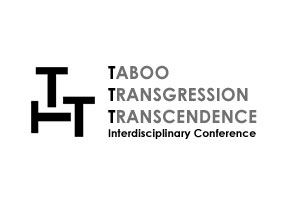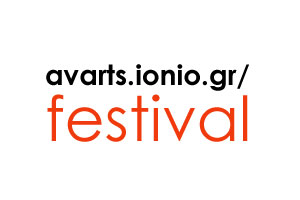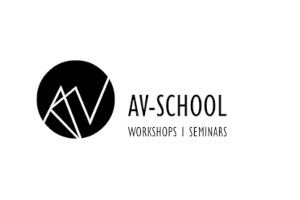MA Audiovisual Arts in the Digital Age - Master's Thesis
Abstract
The aim of the project is to explore the concept of the “Technological Self” who is evolving within a rapidly developing technological society. Its main focus is on the changing relationship between humans and technology and specifically on the perception of the Self in relation to society’s increasing dependence on technology, highlighting the dynamic nature of human identity while emphasizing on the positive qualities of a biologically advanced self. For this purpose, we created an audiovisual interactive installation in VR environment exploring the 3D landscape of human physiology, based exclusively on biosignals derived from the human autonomic nervous system. This research attempts to offer a philosophical statement regarding human strength and resilience in the face of evolving digital technologies by promoting self-empowerment, awareness, identity reinvention and trust in the technologically miraculous self. It emphasizes on our complex and sophisticated biological systems, reminding us to trust them, offering reassurance and a sense of empowerment within the newly emerging socio-technological framework.
Keywords: Human-Computer Interaction, Physical Computing, Biofeedback, Biosignals, Virtual Reality, Virtual Embodiment, Interactive Audiovisual Installation, Digital Art, Technological Self, Identity
Objectives
This project aims to redefine the relationship between human physiology and digital media by transforming involuntary bodily functions into a real-time audiovisual composition. Specifically, it addresses the following objectives:
- How biofeedback can be incorporated in real-time audiovisual artistic installations.
- The role of human nervous system and physiology in creating immersive digital experiences.
- How the mapping of human ANS functions to natural elements can provide a deeper understanding of our relationship with nature, technology and identity while supporting positive psychological effects.
Methodology
The installation is developed utilizing a combination of Arduino Sensors and TouchDesigner Software for real-time VR audiovisual synthesis. The automatic functions of heart beating and breathing have been selected to function as real-time inputs that affect creative 3D content and produce spatial sound. The breathing signal also enhances user’s navigation by enabling additional control of the movement in the 3D space.
Input signals:
1. Heart beat: Pulse Detector, Arduino
- Breath activity: Breath sensor using a hand-built respiratory belt - Flex Sensor, Arduino
- Alpha Brain Waves: Automated-signal, TouchDesigner - Possible future addition: Arduino EEG sensor
- Eye-Blinking: Automated-signal, TouchDesigner - Possible future addition: through VR headset eye-tracking cameras.
Biosignals are mapped onto natural elements in order to support the project’s goals for self-empowerment and self-realization, harnessing power from symbols of nature. Specifically:
- Heartbeat → Tree Roots: The heartbeat serves as the source of life, like roots sustain and provide life to plants and trees.
- Breathing → Air: The rhythmic nature of breath corresponds to wind, symbolizing flow and vitality.
- Blinking → Water: Just as blinking lubricates and cleanses the eyes, water represents renewal and clarity.
- Brainwaves (Alpha Waves) → The Moon: Alpha brain waves which are associated with relaxation and meditation are symbolically mapped to the Moon’s serenity and calming sensation.
Conclusion
The project achieved the research’s goals in theoretical, technical and artistic levels. We explored how biosignals can create and shape digital artistic expression while we introduced a new way of engaging with real-time audiovisual art by incorporating involuntary physiological responses, fostering self-empowerment and a deeper connection between the user, their body, technology and nature. Virtual Reality environment and spatial sound where incorporated in order to create an immersive experience. By symbolically representing the selected biosignals with elements of nature, we managed to strengthen the user's introspective experience and their connection to the natural world.
Ultimately, the project contributes to the exploration and understanding of the "Technological Self" prompting users to reflect on their identity within a rapidly evolving technological society, fostering psychological benefits, self-empowerment and a deeper awareness of the evolving self.
References
Hansen, Mark B. N. 2006. Bodies in Code: Interfaces with Digital Media. New York: Routledge.
Kac, Eduardo. 2006. Signs of Life: Bio Art and Beyond. Cambridge, MA: MIT Press.
Karle, Amy. 2011. Biofeedback. https://www.amykarle.com/project/biofeedback/
Lanier, Jaron. 2017. Dawn of the New Everything: Encounters with Reality and Virtual Reality. New York: Henry Holt and Co.
Lozano-Hemmer, Rafael. 2006. Pulse Room. https://www.lozano-hemmer.com/pulse_room.php
Luppicini, Rocci. 2012. Handbook of Research on Technoself: Identity in a Technological Society (2 Volumes). Hershey, PA: IGI Global.
⸻. 2013. The Emerging Field of Technoself Studies (TSS). Hershey, PA: IGI Global.
Sherry, Turkle. 1984. The Second Self. MA: MIT Press.
Won, Andrea Stevenson, Jeremy Bailenson, Jimmy Lee, and Jaron Lanier. 2015. "Homuncular Flexibility in Virtual Reality." Journal of Computer-Mediated Communication 20 (3): 241–259. https://doi.org/10.1111/jcc4.12107.
Evangelos Aslanidis (b.1985) is an Athens-based musician and new media artist. He combines a multidisciplinary background of professional activity and experience, counting numerous participations in A/V projects, events & festivals. He recently presented his Master's Thesis at the lonian University, "ΜΑ: Audiovisual Arts in The Digital Age program", currently waiting to be awarded with a GPA of 9.95/10.
His projects lean towards experimental and immersive creative outputs that stimulate the visual and emotional senses of visitors, combining storytelling, interactivity and artistic design while offering the opportunity to explore complex concepts in unique ways. Lately, Evangelos explores virtual reality, HCI, real-time interactive installations, projection mapping, audio reactivity, 3D, 2D as well as mixed visual techniques.
In 2024 & 2025 he participated in the Athens Digital Arts Festival performing live A/V performances featuring large scale projection mapping pieces (360 Chromosphere Dome & former Santa Rosa Courthouse Buildings). In 2023 he participated in a 7-Day workshop & VR exhibition at The Greek National Opera lead by Giorgos Cherouvim (ch3.gr), which focused on further broadening the relationships between architecture and music & space and sound through the use of new digital media.
Back





